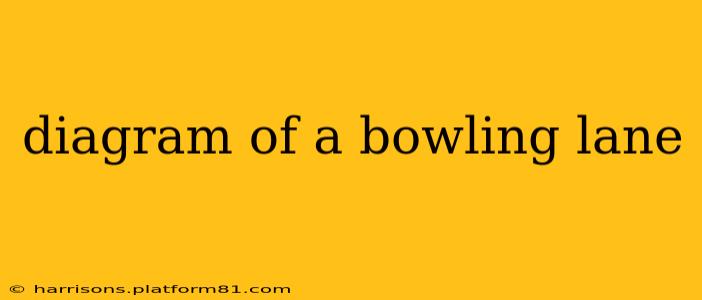Bowling, a seemingly simple game, relies on a precisely engineered lane to ensure fair play and exciting competition. Understanding the components of a bowling lane is crucial for both casual bowlers and serious players looking to improve their game. This detailed guide will break down the anatomy of a bowling lane, answering common questions and providing insights into its design.
What are the Key Components of a Bowling Lane?
A bowling lane is more than just a wooden surface; it's a complex system designed for consistent ball roll and accurate scoring. Here's a breakdown of the key components:
-
Approach: This is the area where bowlers take their steps before releasing the ball. It's typically made of a slightly rougher material than the lane itself, providing better grip for bowling shoes. The length of the approach varies slightly but generally provides enough space for a comfortable approach.
-
Foul Line: This crucial line marks the boundary between the approach and the lane. Stepping over this line before releasing the ball results in a foul, invalidating the throw. It's usually clearly marked and easily visible.
-
Lane Surface: This is the main playing area, typically made of highly polished, specially treated wood. The surface is designed to offer a consistent and predictable ball roll, though subtle variations in oil patterns can significantly impact the ball's trajectory.
-
Lane Arrows: Arrows embedded in the lane surface aid bowlers in aiming their shots. They act as visual cues to help determine the ball's path down the lane.
-
Foul Line Indicators: Often located close to the foul line, these small indicators are usually present on both sides of the lane and provide a visible reference point to avoid stepping over the line.
-
Pin Deck: The area at the end of the lane where the ten pins are set up. The pin deck is also carefully constructed to allow for consistent pin action and to ensure pins fall cleanly.
-
Gutters: These channels on either side of the lane catch balls that go off course. They prevent balls from endlessly rolling, ensuring a swift end to the frame.
-
Pinsetters: The automated system that resets the pins after each frame, crucial for the efficient gameplay of the game. Modern pinsetters are highly sophisticated machines that ensure accurate and quick pin resetting.
What is the Length of a Bowling Lane?
A standard bowling lane measures 60 feet from the foul line to the head pin. This precise length is crucial for consistent gameplay and scoring across different alleys.
What Material is a Bowling Lane Made Of?
Bowling lanes are traditionally constructed from hardwood, often maple or pine. The wood is carefully selected and treated to provide a smooth, durable playing surface capable of withstanding considerable wear and tear. Modern lanes often incorporate synthetic materials for added durability and maintenance ease.
How is the Oil Pattern Applied to a Bowling Lane?
The oil pattern is a crucial aspect of the lane's design. It's applied using a machine that precisely distributes oil across the lane's surface, creating various patterns that affect the ball's hook and trajectory. Different oil patterns cater to various skill levels and create varying degrees of difficulty. The oil pattern is a key element in strategic bowling.
What is the Purpose of the Arrows on a Bowling Lane?
The arrows on a bowling lane act as visual guides for bowlers. They assist in aligning the bowler's shot, helping them aim for specific areas on the lane to achieve desired hook or trajectory for knocking down the pins.
How Does the Oil Affect Bowling Ball Movement?
The oil on the lane dramatically affects how the bowling ball moves. The oil creates a friction differential, influencing the ball's hook and the overall trajectory. A ball moving through oiled areas will maintain a more direct path while hitting dryer areas will increase its hook, and thus changing its trajectory. Understanding the oil pattern is essential for effective bowling.
This comprehensive overview should provide a thorough understanding of the bowling lane's design and its impact on gameplay. Remember that mastering the intricacies of the lane is key to improving your bowling skills and scoring higher.
